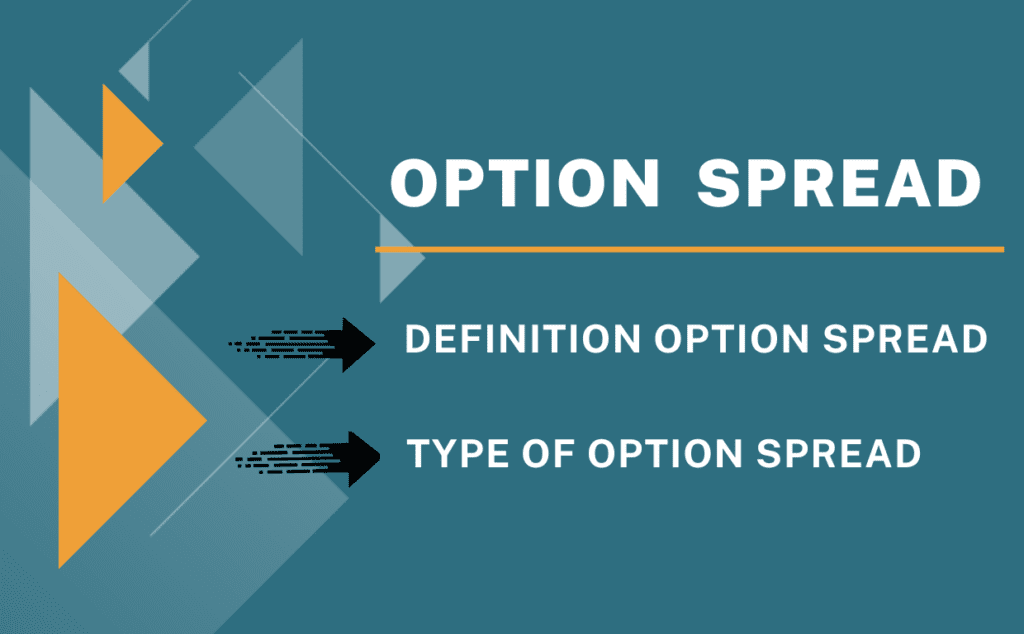Table of Contents
In today’s fast-paced financial landscape, investors constantly seek innovative ways to diversify their portfolios and manage risks effectively. One such strategy that has gained significant popularity is the Option Spread. This article will delve into Option Spread, exploring what Spread Strategies are, how they work, and their potential benefits for investors.
In the ever-evolving world of finance, innovative investment strategies have become essential for those looking to optimize their returns while managing risks. Spread Options have emerged as a powerful tool for achieving these goals.
Before we dive into Options Spread, it’s crucial to grasp the fundamentals of options. Options are financial derivatives that award the holder the right, but not the obligation. Derivative are trading on BUY or SELL an underlying asset at a foreordained price, known as the strike price, within a specified period of time.
An Option Spread is a type of financial derivative that derives its value from the difference (spread) between the prices or returns of two underlying assets or financial instruments. These options are commonly used in various financial markets and can take several forms, including.
Price Spread Options: These options are based on the difference in prices between two underlying assets. For example, a trader might take a long position in a spread option that profits when the price difference between two stocks, commodities, or currencies widens or narrows.
Yield Spread Options: These options are linked to the difference in yields or interest rates between two fixed-income securities, such as government bonds or corporate bonds. Traders use yield spread options to speculate on changes in the yield spread or to hedge against interest rate movements.
Credit Spread Options: Credit spread options are related to the difference in credit spreads (interest rate differentials) between two bonds with different credit qualities. These options are used for trading or hedging credit risk in fixed-income markets.
Volatility Spread Options: These options are based on the difference in implied or historical volatility levels between two assets or markets. Traders use volatility spread options to speculate on changes in market volatility or to hedge against volatility risk.
Option Spread can be structured in various ways, including as call options, put options, or combinations of both. The key factor is that their value depends on the relationship between the two underlying factors, such as price, yield, credit spread, or volatility.
Traders and investors use option spread for various purposes, including speculation, hedging, and risk management. These options can provide flexibility and unique strategies to address specific market conditions and objectives.
However, they can also be complex instruments, so a good understanding of the underlying assets and market dynamics is essential when trading or investing in option spread.
Types of Option Spread
Option Spread come in various forms, each tailored to specific market conditions and trading strategies with a particular focus on three powerful variants. Vertical spreads, horizontal spreads, and diagonal spreads. By the end of this comprehensive guide, you’ll have a firm grasp of these strategies, enabling you to navigate the financial markets with confidence.
Vertical Spreads: The Money Spread
A vertical spread strategy, often referred to as a money spread, revolves around the simultaneous use of two options, each with the same expiration date but different strike prices. This strategy allows traders to curtail their downside risk.
However, it comes at the cost of capping their upside potential. Let’s illustrate the Types of Option Spread concept with an example. Its a more advanced strategy then hedging bets.
Imagine you’re considering trading options on XYZ Corporation. You believe the stock’s price will rise, but you want to mitigate your risk. In this scenario, you might buy a call option with a strike price of $50 and simultaneously sell a call option with a strike price of $55, both expiring on the same date.
If the stock rises but doesn’t exceed $55, your risk is limited to the difference in strike prices, while your profit potential remains capped.
Horizontal Spreads: The Calendar Spread
A horizontal spread strategy, also known as a calendar spread, employs long and short options with identical strike prices but differing expiration dates. The primary objective here is to profit from the effects of time decay, often represented as theta. Theta measures how much an option’s price diminishes over time.
Why does time decay matter? Options nearing their expiration date are more susceptible to this phenomenon than those with more extended maturities. In a horizontal spread strategy, you can use a longer-term option to offset potential losses from a shorter-term option that might expire worthless.
Simultaneously, you can still profit from the longer-term option as it benefits from time decay at a slower rate.
Diagonal Spreads: Harnessing Time Decay and Delta
A diagonal spread strategy is a sophisticated approach that combines elements of vertical and horizontal spreads. It involves simultaneously entering into long and short positions with two options of the same type but different strike prices and expiration dates.
This strategy leverages time decay, similar to a horizontal spread, but also capitalizes on any movements in an option’s price concerning every point of movement in the underlying market, a concept known as delta.
Let’s break down how this works in practice. Suppose you are trading options on ABC Inc. You anticipate a gradual increase in the stock’s price over time, but you also recognize that time decay will affect shorter-term options more significantly.
In this scenario, you might buy a longer-term call option with a strike price of $60 and sell a shorter-term call option with a strike price of $55. As the stock climbs, the longer-term option benefits from delta while minimizing the impact of time decay.
The Power of Options Spreads
In summary, options spreads offer a diverse toolkit for traders seeking to manage risk and optimize their investment strategies. Vertical spreads allow for controlled risk exposure, horizontal spreads leverage time decay, and diagonal spreads combine these elements with the added benefit of delta.
Remember, successful options trading involves careful analysis, precise execution, and a deep understanding of market dynamics. Options spreads can be potent instruments in your financial arsenal, but they should be wielded with knowledge and strategy.
In today’s fast-paced financial landscape, investors constantly seek innovative ways to diversify their portfolios and manage risks effectively. One such strategy that has gained significant popularity is the Option Spread. This article will delve into Spread Options, exploring what they are, how they work, and their potential benefits for investors.

Bull Spread:
This strategy of bull spread involves buying a call option with a lower strike-price and simultaneously selling a call option with a higher strike-price to minimize loss. It’s used when the investor anticipates might be market will bullish trend. Bull Spread is also know as Call Spread.
Example
The Tesla Stock price while entering a call credit spread
is $150. Each option contract consists of 100 shares. Example the components of call credit spread below,
Sell call at $150 with expiration in the next month
Buy call at $170 with expiration in the next month
The entry price for the option is $1 (Sold at $150 for $2 and bought at $170 for $1)
The greatest capability and maximum potential of profit for this spread options deal is
= $1 x 100
= $100
The call spread in this scenario is 20
Hence, the maximum potential loss is:
= formula (Call Spread – Entry price x No of shares)
= ($20-$1) x 100
= $19 x 100
=$1,900
Bear Spread
This is the strategy of bear spread that entails involve- buying a put option with a higher strike-price and selling a put option with a lower strike price. It’s used when the investor anticipates might be market will a bearish trend. Bear Spread is also known as Put Spread.
Example
The Amazon stock price while entering a put credit spread is $430. Each contract consists of 100 shares. Example the components of the put credit spread is below,
Sell put at $415 with expiration in the next month.
Buy put at $410 with expiration in the next month.
The entry price for the option is $1.20 (Sold at $415 for $5.80 and bought at $410 for $4.60)
The greatest capability and maximum potential of profit for this spread options deal is.
= $1.20 x 100
= $120
The put Option Spread in this scenario is 5
Hence, the maximum potential loss is:
=formula (Put Spread – Entry price x No of shares)
= ($5-$1.20) x 100
= $3.80 x 100
=$380
How Option Spread Work
Option Spread derive their value from the difference between the prices of two related assets or securities. The spread is essentially the gap between these prices, and investors use Option Spread to profit from changes in this gap.
Benefits of Spread Options
Spread Options offer several advantages to investors, including:
Risk Management: They can be used to hedge against adverse price movements in the underlying assets.
Limited Risk: Investors’ potential losses are capped, as they are not obligated to exercise the options.
Versatility: Spread Options can be employed in various market conditions, providing flexibility to traders.
Risks Associated with Spread Options
While Spread Options have their benefits, it’s essential to acknowledge the associated risks, such as:
Limited Profit Potential: Profits are also limited compared to trading the underlying assets directly.
Complex: Spread Options can be complex, requiring a deep understanding of the market and strategy.
Strategies for Trading Spread Options
To succeed in Spread Options trading, investors often employ strategies like,
Credit Spreads: These involve selling options to generate income while managing risk.
Debit Spreads: This strategy requires buying options to profit from directional price movements.









